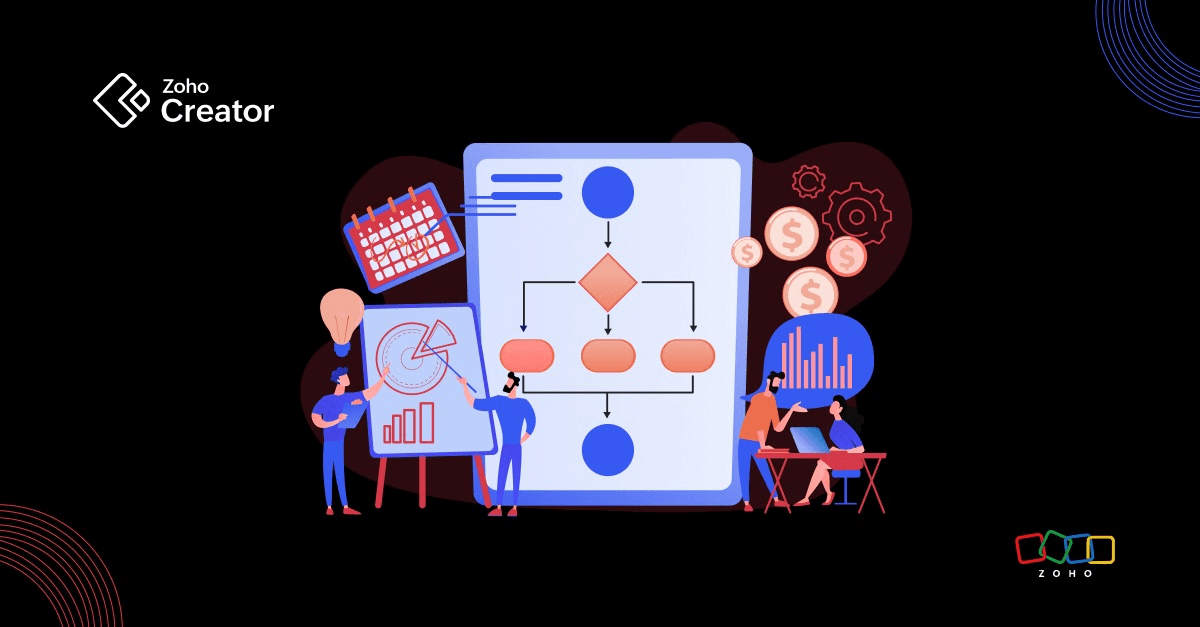- HOME
- Know Your Tech
- Collaborative Application Development capabilities to look for in a Low-Code Application Platform (LCAP)
Collaborative Application Development capabilities to look for in a Low-Code Application Platform (LCAP)
- Last Updated : April 20, 2023
- 690 Views
- 7 Min Read
We exist in an era where applications have become go-to solutions for consumers and enterprises alike. Given the unprecedented growth in the demand for business software, IT continues to be the fundamental factor driving business success. This is why enterprises looking to capitalize on this commercialization of IT are doubling down on technology investments and digital transformation (DX) initiatives.
However, for a department at the forefront of organizational digital transformation strategies, IT departments generally remain siloed from the rest of the organization and misaligned with overall business goals. But there are seismic consequences to the disconnect in communications between IT and business units. The absence of robust IT-business collaboration is a leading cause of IT project failure.
The importance of business-led IT
Enterprises where business and IT teams work in silos, relying on fragmented communication lines, usually pay the price with poor project delivery and bad client experiences—and of upsurges in shadow IT. The average business user employs many applications, which aren't always vetted by the IT department. Only a business-led IT approach can help mitigate these risks and strengthen accountability across the organization.
Business-led IT is an approach where IT and business teams partner up to develop and distribute IT efforts throughout the enterprise. Under this business-IT model, the IT team provides business teams with the tools, tech, and other input required to solve business problems. Meanwhile, business teams help IT gain a holistic understanding of day-to-day business problems and learn how their efforts impact the outcomes of the company as a whole.
With the help of business users, every aspect of the company's IT strategy can be optimized to support the business's goals. This means that every IT-related investment and project can be channeled to create or improve business value, making the companies better positioned to succeed.
Introducing collaboration in application development
Introducing strategic business-IT collaboration into software development can vastly improve the process, shorten development cycles, and elevate application quality.
While the IT department is best equipped to understand the technology and build software solutions, they're usually too far removed from the business problems they need to build solutions for. IT can get it right the first time by bringing business users into the development process from day one. Business users, who usually operate at the front lines, have a keen understanding of business needs and the pain points for which the solution is being built. Working together, collaborative development teams can keep a technology-forward approach while cultivating a sense of community—compelling business users to go beyond their roles—within the organization.
How can enterprises facilitate IT & business collaboration for app development?
If you're looking to foster collaborative development between IT and business in order to overcome business challenges, an application development platform with collaborative features may be just what you're looking for. Several development platforms support collaborative application development within an enterprise, and let businesses leverage the intelligence of distributed individuals and teams. Low-code development is one such technology, and low-code development platforms provide considerable value to enterprises.
First off, low-code development platforms are revolutionary when it comes to facilitating effective business-IT collaboration and co-creation, by breaking down silos and looping in development teams, designers, QA personnel, and business leaders.
Additionally, low-code accelerates the app development process by abstracting and minimizing the use of code, ensuring that digital transformation efforts deliver on your business outcomes quickly. With LCAPs for application development, you can empower your development team, while cultivating new teams of citizen developers and business users across the organization who can contribute to your objective while staying agile.
Collaborative features to look for in low-code platforms
There are a number of features that make seamless collaborative co-creation of apps possible. In this blog, we're going to cover five of the top features to look for:
Multi-developer environment and app IDEs
Cross-functional collaboration capabilities and support for fusion teams
A universal scripting language that supports the citizen development model
Collaborative and transparent ADLM
- Community support
1. Multi-developer environment and App IDEs
In a multi-developer project, collaboration is essential for the project's success. But whether your enterprise regularly operates on a pair/mob programming model or, on occasion, uses a code-sharing setup for troubleshooting sessions, multi-user code editing can be chaotic. With multiple developers working on a project and editing code simultaneously, the platform must support and synchronize the flow of work.
An enterprise-grade low-code development platform must support the following multi-user capabilities to optimize the efforts of a multi-developer team:
Integrated development environment (IDE) support, with separate environments for development and testing, for real-time concurrent development.
Reliable version control, so developers can oversee app changes across versions and roll back to an earlier version to fix any issues.
Reusable, configurable, easy-to-integrate components, like common design elements (buttons, form fields, layout components, etc.) to develop per user needs. Reusing tested and proven components reduces development and implementation time and creates consistency across your application landscape.
The facility for application sharing with users or user groups.
Controlled usage access, with multiple levels of visibility and the ability to regulate user privileges to ensure clear governance and compliance.
Ad-hoc code reviewing capability, with standard guidelines and closed feedback loops for improved code quality and smoother on-time application rollout.
Built-in instant communication tools, like audio, video, text chat, and screen sharing.
2. Cross-functional collaboration capabilities and support for fusion teams
One of the biggest advantages of the multi-user capabilities of LCAPs is that non-technical users can actively participate in application building. Versatile "fusion teams" are emerging, bringing together the technology and required additional domain expertise to deliver composable applications.
Gartner research shows that at least 84% of companies and 59% of government entities have set up fusion teams to fast-track digital transformation. As a matter of fact, Gartner evaluates low-code vendors in the Magic Quadrant for enterprise low-code application platforms based on their ability to deliver composable applications.
Fusion teams with cross-functional collaboration capabilities are rightly positioned to respond faster to your project collaboration needs—like creating projects, sharing project data, reviewing designs, and tracking status updates—and their challenges. LCAPs offer the functionality to enable fusion teams to closely collaborate with their peers while securing substantial payoff.
3. A universal scripting language that supports the citizen development model
Although low-code lets you build business applications without programming expertise, LCDPs don't aim to entirely eliminate the need for traditional development. Some real-world problems need highly customized solutions that demand a layer of logic beyond what is attainable using drag-and-drop capabilities.
In such instances, a simplified visual language that both IT and business professionals alike can understand can act as common ground for them to express logic, unifying the company's development efforts with the power of low-code. A simple, robust visual scripting language is the clearest and least error-prone way to transfer knowledge and ideas between business experts and developers. Now, everyone can contribute to the development of sophisticated solutions, regardless of their area of expertise or technical acumen.
4. Collaborative and transparent ADLM
Apps go through various phases during the development lifecycle, and managing these states is essential for delivering software excellence. Integrated application development lifecycle management, coupled with process governance, provides end-to-end visibility throughout the lifecycle and enables collection of real-time project metrics.
This provides management with a reliable source of information on projects, resources, and software delivery status. This information can be centralized, with controlled usage access into key processes—like reporting, workflows, and integrations—to help the development team avoid blind spots and address issues throughout the development lifecycle.
An LCAP with the capability to manage and grant controlled access to knowledge bases and wikis, maybe even across multiple projects in the development environment, will enable business professionals to help themselves to all the information they need to ideate, develop apps, and iterate rapidly.
5. Community support
Although not without challenges, truly collaborative development yields better-quality applications while optimizing the process and shortening development cycles faster than any developer can accomplish alone. Dedicated community-led development can take this one step further and amplify the network effect for peak collaboration.
Often, development projects that require collaboration are globally distributed, with different critical parameters and technological requirements, each with its own respective information resources. Collaborative developer forums and platform communities that support your LCAP can contribute to creating a healthier, active, app-building ecosystem—and ultimately add tremendous value to the product.
Developers can find someone to help them, no matter what they're looking for—whether it's development advice, tactical discussions or posting ideas, or testing app integrations and UX. Community support, like FAQs, live chats, documentation and wikis, global and regional mailing lists, and social media handles also help developer communities and forums thrive.
Final thoughts
Effective collaboration, and the ability to draw from an organization's extensive knowledge pool, is the pillar supporting most successful businesses worldwide. However, for an enterprise burdened by a backlog of projects, or a lack of time or proficient development skills, the right app development platform is fundamental to collaborative application development.
An enterprise-grade low-code development platform can arm your organization to make business app development available to everyone under IT governance, creating a more educated, effective workforce.
 Rashmi Sasi
Rashmi SasiProduct marketer at Zoho Creator, where she researches and creates content about all things low-code. Writer by day, reader by night, into eclectic books and long sentences, sci-fi enthusiast, and novice painter. Dislikes character limits.



